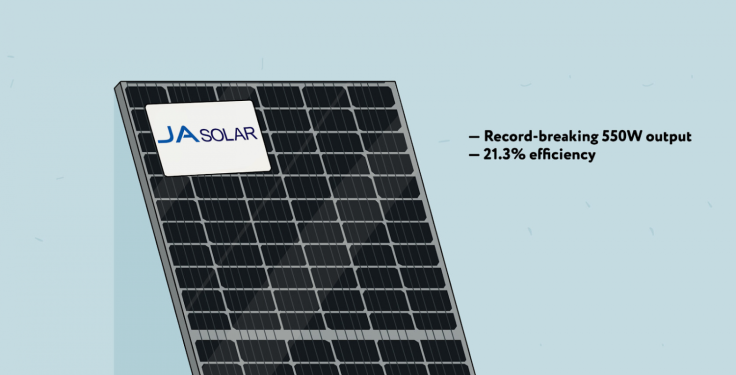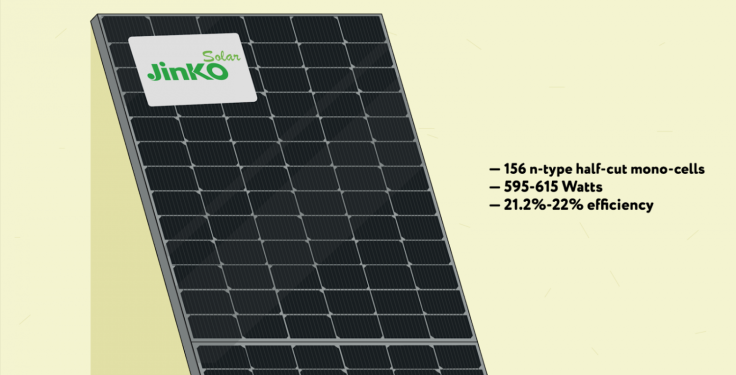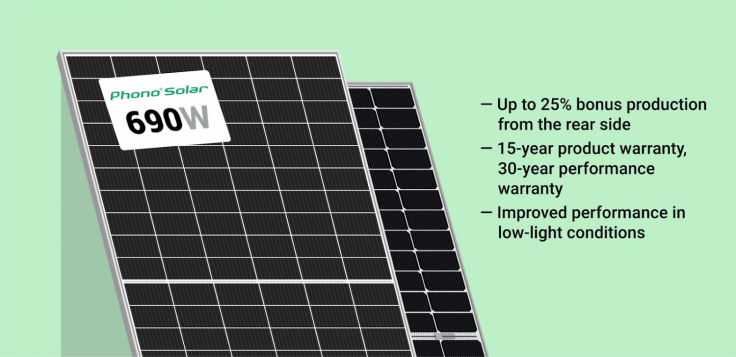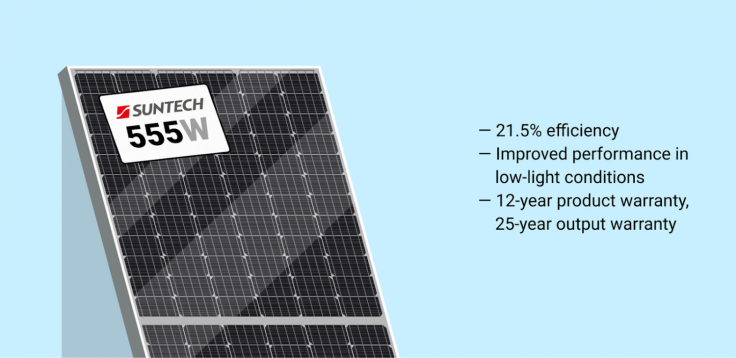
Solar panels can be a valuable business asset. They lower the energy bills of your enterprise and create a positive public image. In this article, we'll introduce you to the best commercial solar panels in 2023.
What is a solar panel?
A solar panel, also known as a photovoltaic (PV) panel, is a device that converts sunlight into electrical energy. It is made up of multiple photovoltaic cells, which are typically made of silicon or other semiconducting materials. These cells absorb photons of light from the sun and release electrons, creating an electric current.
When multiple solar panels are connected together, they can create a solar array or solar panel system, which can generate enough electricity to power homes, businesses, and even entire communities. Solar panels are a popular form of renewable energy because they produce clean electricity without emitting greenhouse gases or other pollutants. They are used in a variety of applications, from small portable devices like calculators and outdoor lights, to large-scale solar farms that generate electricity for the power grid. You can use solar panels to lower the bills of your business, whether it's a small cafe or a large office.
What's the difference between residential and commercial solar panels?
Compared to residential systems, commercial solar power installations are larger and more effective. The scale is the primary distinction between solar panel systems for homes and businesses. Commercial systems are bigger than residential ones since a business's electrical requirements are substantially greater.
Different panels are used. In contrast to 60/120-cell panels for residential solar systems, 72/144-cell and 96/192-cell panels are more frequently used in commercial solar systems because space is less of an issue. The benefit of larger panels is that you may create a system with fewer modules and produce the same amount of energy, saving money.
Building a large system for commercial use takes a long time. You'll need 2-4 weeks to get a home solar installation. A commercial solar project can take months because of all the inspections and permit that the owners have to get first.
5 Best commercial solar panels in 2023
What panels are good for building commercial solar projects? Here is the list of good options.
JAM72S30/MR 550 W from JA Solar

A 144-cell 550 W panel from JA Solar is fantastic for commercial and utility-scale installations. The module shows impressive 21.3% efficiency. Three bypass diodes and a half-cut design decrease the impact of shading. The panel withstands 5400 PA of front load. Busbars and half-cut cells improve the longevity of a panel and flow of current flow inside a panel. It is designed to last for over 25 years and comes with a 12-year warranty for the product and a 25-year warranty for performance.
Trina Solar Vertex 670 W

Vertex solar panel from Chinese brand Trina Solar provides up to 670 W power output with up to 21.6% efficiency. It's a great industrial solar panel. It features multi-busbar technology and improved PID and microcracks protection. The low cost of a panel guarantees a better return on investments.
Jinko Solar Tiger Neo 615 W

Tiger Neo is a panel from Jinko Solar that reaches 615 W power output in Standard Test Conditions. The efficiency of this module goes as high as 22%. The panel has 156 half-cut n-type cells and it's particularly large: 97 × 44.6 inches. It is best suited for commercial and solar panels industrial installations. Tiger Neo comes with 12/30 years warranties for product and output. The panel retains over 87.4% of its production by the year 30.
Phono Solar Helios 690 W Module

Helios is a bifacial panel by Phono Solar, another Chinese brand, and it's among the best industrial solar panels. It is designed primarily for building a system of a large scope. The most powerful panel in this line is rated at 690 W DC output for the front side. Active rear side provides up to 25% bonus production. Taking bifacial gain into account, you could get up to 828 watts from a single panel.
Suntech 555 W Ultra V

A monofacial panel Ultra V from Suntech is a great commercial solar panel for business and industrial installations. Ultra V provides up to 555 watts of output with a 21.5% efficiency. It shows improved production on cloudy days and doesn't heat up as much while operating. After 25 years this panel retains over 84.8% of its initial power. There is also a bifacial variation of this model.
What are the types of solar panels?
There are three main types of solar panels: monocrystalline, polycrystalline, and thin-film. Here is a brief description of each type:
Monocrystalline: Monocrystalline solar panels are made from a single, pure silicon crystal. They have a uniform black color and are the most efficient type of solar panel, with a typical efficiency range of 18-22%. They are also the most expensive. That's the most widespread type of panels and the one that we recommend.
Polycrystalline: Polycrystalline solar panels are made from multiple silicon crystals that are melted together. They have a blue-speckled appearance and are less efficient than monocrystalline panels, with a typical efficiency range of 15-18%. They are less expensive than monocrystalline panels. Some consider them to be obsolete.
Thin-film: Thin-film solar panels are made by depositing a thin layer of photovoltaic material onto a substrate such as glass or plastic. They have a range of colors and are the least efficient type of solar panel, with a typical efficiency range of 10-15%. They are often used in mobile installations, such as RV and boat systems.
You can often see bifacial solar panels in large solar installations. Some experts say that they already make up 30-50% of American installed solar power capacity. Bifacial panels have an active rear side and harvest sunlight using both sides of a module. They are 5% more expensive than monofacial panels on average but you gain 5-10% more energy from them.
Average cost of commercial solar panels
Commercial solar panels cost mostly depends on the manufacturer. Chinese are the cheapest and you can get them for $0.6-$0.9 per watt before installation services. Look for brands like Trina, Phono, LONGi, Jinko and JA Solar. American-made panels are slightly more expensive and come at over $1 per watt. Notable names are Canadian Solar, Mission Solar, Silfab and a few others.
Don't forget to make use of the Federal Solar Tax Credit. You can deduct 30% of your installation cost from income taxes. There is no cap for the maximum amount of incentive. Smaller local incentives can also help bring down the cost of a PV system as well.









